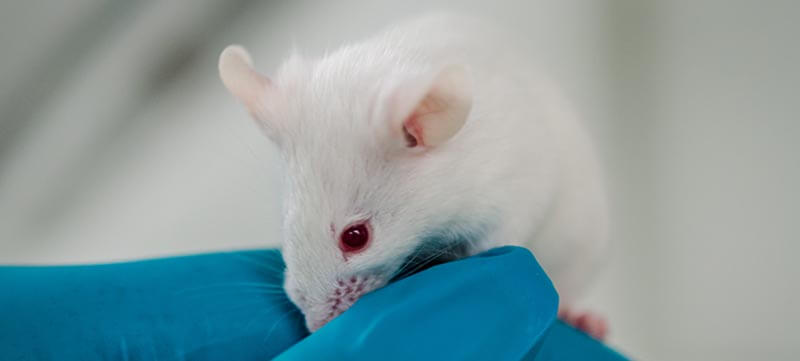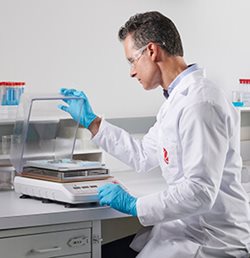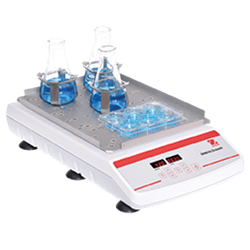
When a person or an animal is sick, the immune system responds by attacking the invading organism and continues to do so until they feel better.
Researchers in the animal sciences are always looking for ways to develop high-quality products to boost animal immune systems. They make their determinations by understanding immunology through the lens of genetic variation, growth and development, and other health-related facets of each species, including reproduction, digestion, and metabolism.
Much like a human, if the immune system of an animal is not functioning as it should, it can lead to the animal developing an autoimmune disease, cancer, or many common disorders not traditionally viewed as immunologic, including metabolic, cardiovascular, and neurodegenerative conditions.
ELISA and Animal Immunology
An enzyme-linked immunosorbent assay, also called ELISA, is a test that detects and measures peptides, proteins, antibodies, and hormones in the blood.
As the most widely used technique, ELISA works by coupling an antibody or antigen to an assay enzyme. The assay combines the specificity of the antibody and the sensitivity of the assay enzymes to primarily detect antigens, substances that can stimulate the production of antibodies and combine specifically with them. The sensitivity and precision of the assay are then enhanced by coating the plate with high-affinity antibodies.
Researchers in the field of animal immunology can use ELISA to determine if a dog or cat, for example, has antibodies related to certain infectious conditions. Since antibodies are made in response to infection, the presence of antibodies in the bloodstream can indicate whether an animal has been in contact with a certain virus.
The Indirect Method of ELISA
Several ELISA methods are used to test the blood for antibodies. For the purposes of this example, we will focus on the indirect method and discuss its steps since this is the most frequently used method.
Say we want to test the blood of a chicken. First, we extract a fresh blood sample from the animal, collect the supernatant fraction after the sample has been centrifuged, dilute it with a phosphate buffer solution at 1:100, and let it stand.

Next, we coat the antigens to make specific antigens that link with solid-phase carriers to form a solid-phase antigen. We keep the sample incubated overnight at 4℃. The following day, we add five percent skim milk powder for sealing and wash it three times to remove those unbound antigens and impurities.
The third step involves adding the serum being tested (the first antibody) and incubating it for one hour at 37℃. We then add phosphate-buffered saline and wash for 5 minutes at room temperature before drying up.
For step four, we add enzyme-labeled antibodies and incubate for one hour at 37℃. Then we add phosphate-buffered saline and wash for 5 minutes at room temperature before we dry up.
Finally, we add a substrate for chromogenic assay and keep the reaction at 37℃ for 30 minutes. We then end the test by adding 2 ml of sulfuric acid solution. Now, we can measure optical density value by the ELISA detector and calculate the ratio of positive serum to negative serum.
The ELISA method we just described requires that the sample be shaken and blended several times throughout the testing process. Samples must be blended well before and after dilution, and all reagents must be shaken before they are added in to ensure the durability and uniformity of the experiment. The OHAUS Microplate Shaker is a valuable asset to ensure this process is carried out efficiently and effectively.
It can also be a helpful tool during the washing process, which separates antigens or antibodies bound to the solid phase from nonspecific components adsorbed during incubation. This step in the testing process is equally important in meeting the specificity of ELISA.
The OHAUS Microplate Shaker
The OHAUS M icroplate Shaker is a valuable asset at any lab that conducts ELISA testing.
icroplate Shaker is a valuable asset at any lab that conducts ELISA testing.
Our device has a compact design, allowing it to easily fit into hoods or incubators, while its rubber base ensures durability and added stability. The microprocessor control and brushless DC motor provide consistent uniform shaking action with reliable results.
The OHAUS Microplate Shaker has a speed-ramping feature that can increase the rate of speed slowly and safely to the desired set-point. Additionally, audible and visual signals activate when the system detects an obstruction or overload of the tray.
Learn more about OHAUS shakers.
References
https://www.immunology.org/public-information/what-is-immunology
https://www.mybiosource.com/learn/ELISA